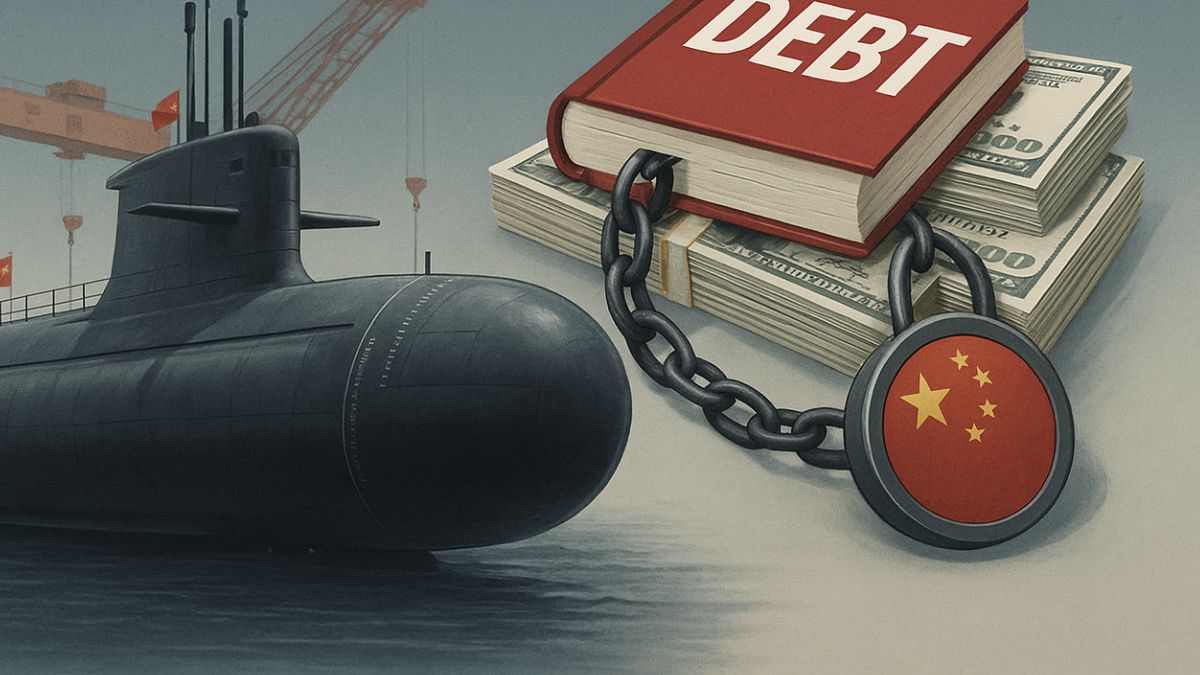Pakistan’s pursuit of deep-sea capability rests on an uncomfortable truth: the Hangor-class submarines it so proudly advertises are financed overwhelmingly by Chinese loans. Behind the rhetoric of deterrence and modernisation lies a financial anchor, with Beijing’s banks effectively holding the keys to Islamabad’s naval firepower.
With nearly 80% of the estimated $4–5 billion cost covered by Chinese credit, each vessel carries not only torpedoes and missiles but also embedded leverage. Spares, software updates and even hull work risk becoming entangled in a creditor–debtor relationship where Beijing decides the pace of delivery.
How does Chinese debt shape Pakistan’s naval ambitions?
Islamabad’s eight-boat Hangor deal is more than procurement. It represents a long-term mortgage that transforms every replacement engine or part into a matter of Chinese goodwill. Delays in repayment or political divergence could be punished by slowing supply chains, stretching repair schedules or withholding technical assistance.
The case of Thailand offers a cautionary tale. The Royal Thai Navy’s S26T project was paralysed for three years after Germany blocked export clearance for MTU engines. Beijing insisted on replacing them with its CHD-620s, forcing Bangkok into protracted testing and compensation battles.
Pakistan has opted for the same engines, but without Thailand’s bargaining power, it risks inheriting all of the problems without any of the safeguards.
What risks do the Hangor engines pose?
Propulsion is the heart of any submarine. If Chinese-built engines fail, operational availability collapses, leaving the boats tied to dockyard walls. Thailand managed to extract extended warranties after delays; Pakistan has entered its agreement with fewer protections and weaker leverage.
This dependency extends well beyond engines. Every software patch, sonar calibration or fire-control update requires access to Chinese technicians and systems. What is presented as self-reliant capability is, in practice, contingent on Beijing’s willingness to keep the machinery running.
How does this dependency affect strategy?
Pakistan’s reliance on Chinese arms is already heavy. Between 2020 and 2024, over 63% of China’s defence exports by value went to Islamabad, worth more than $5 billion.
The Hangor deal deepens this imbalance. With foreign exchange shortages already delaying work at Karachi Shipyard, and with Pakistan struggling under spiralling debt, the country’s ability to sustain the fleet is in doubt.
China does not need to say no outright. Quiet bureaucratic inertia—slowed shipments, extended queues for spares—could immobilise an entire fleet without a single veto. In a crisis, that leverage would matter as much as the submarines themselves.
What is the strategic takeaway?
The Hangor-class is advertised as Pakistan’s leap into blue water, but in reality it is a mortgage written in Beijing. Debt repayment schedules and maintenance pipelines bind Islamabad to China in ways that torpedoes cannot overcome. Each submarine represents a balance sheet entry as much as a naval asset.
For Pakistan’s planners, the warning is stark: autonomy at sea cannot be built on external credit. Until these financial terms are renegotiated, every nautical mile gained by the Hangor fleet comes with an interest payment to Beijing. Debt does not steer a submarine, but it may well steer policy.
